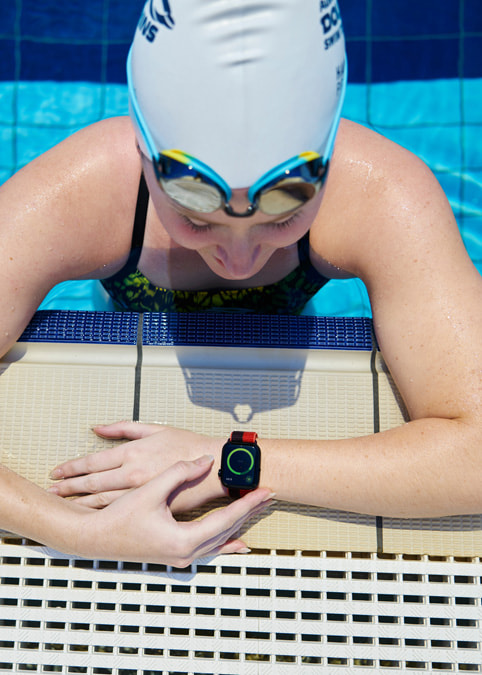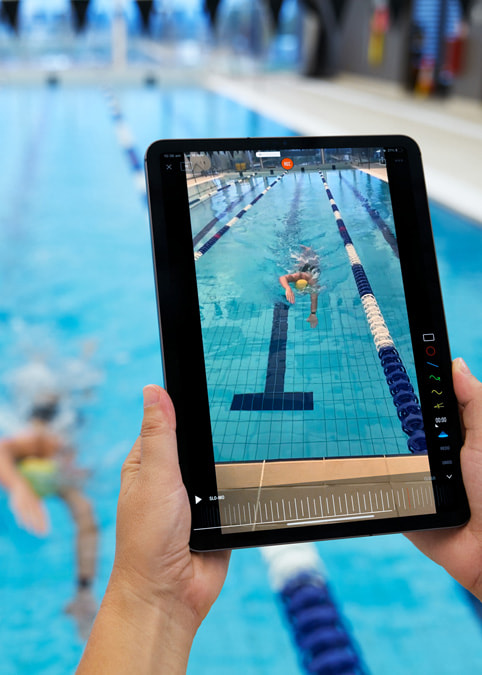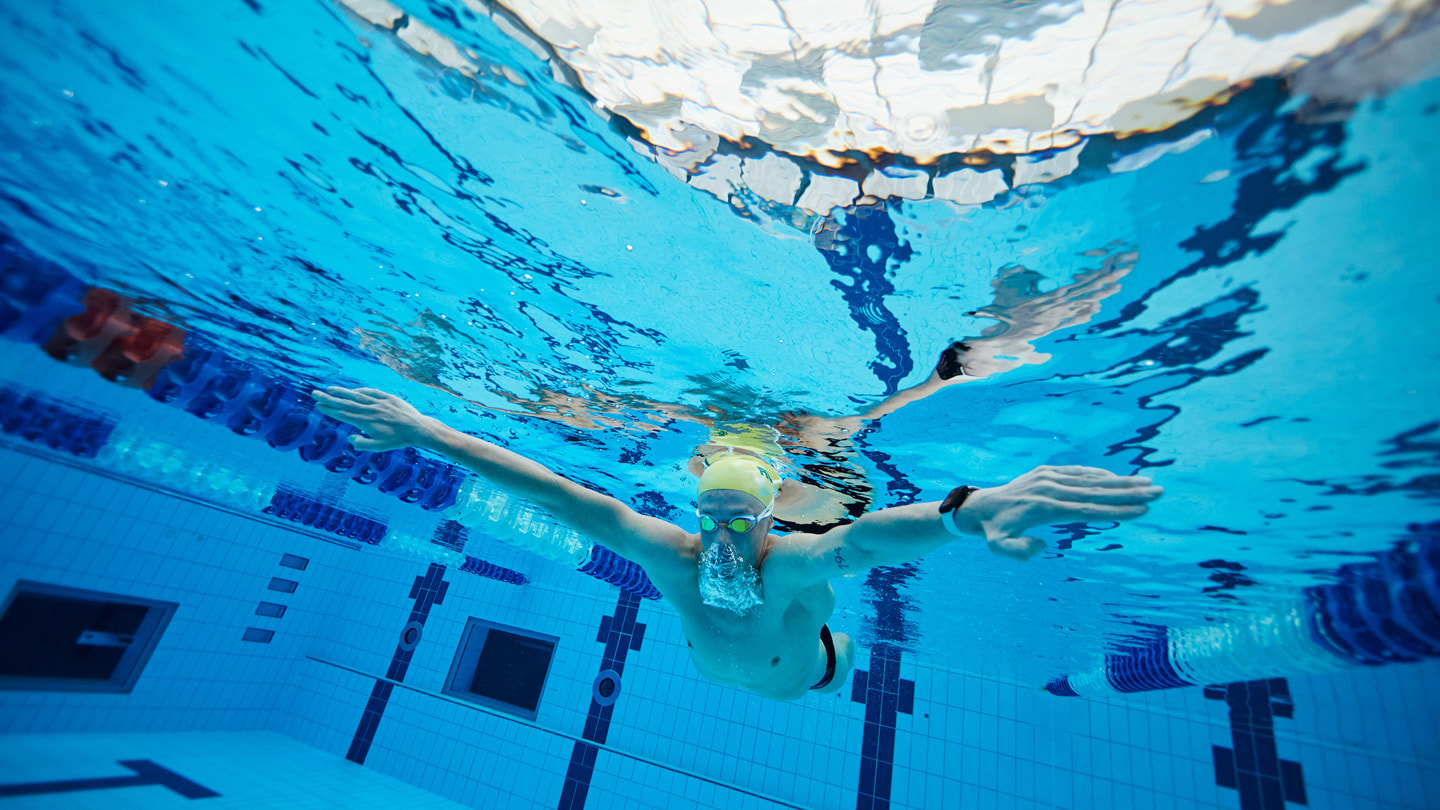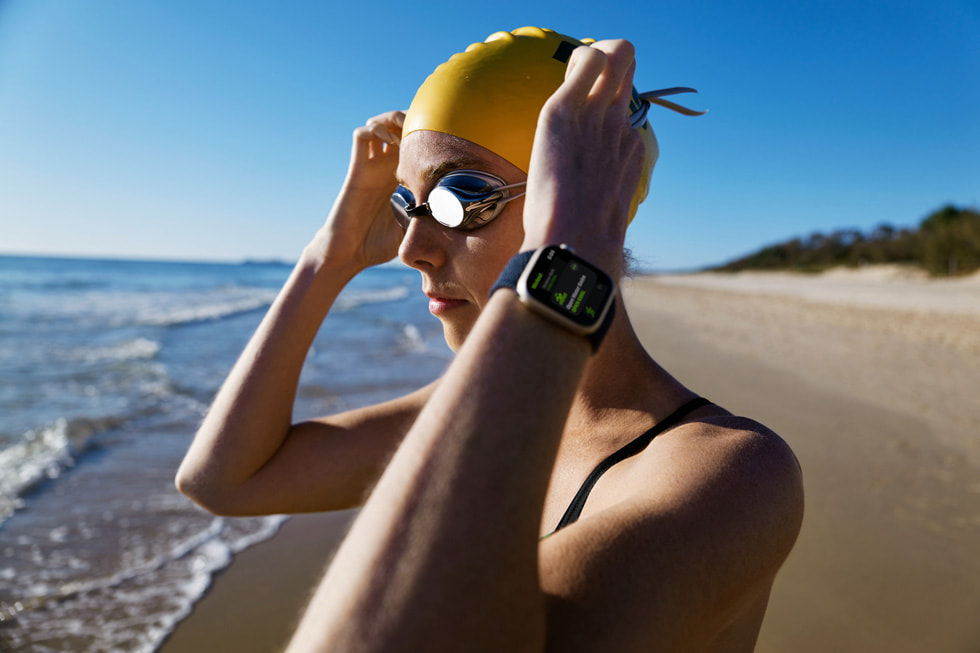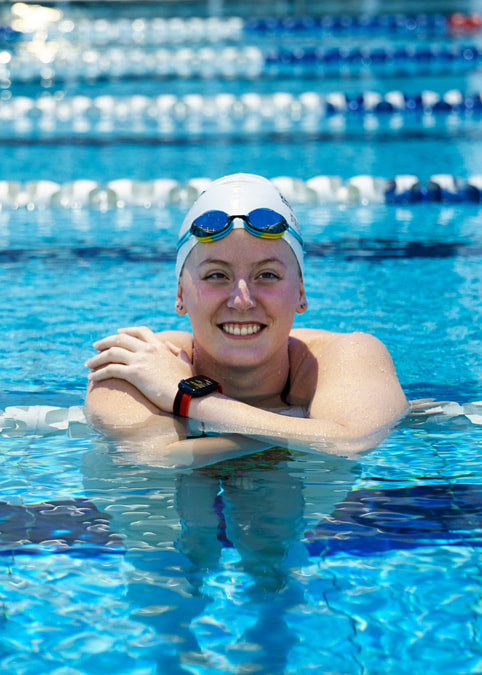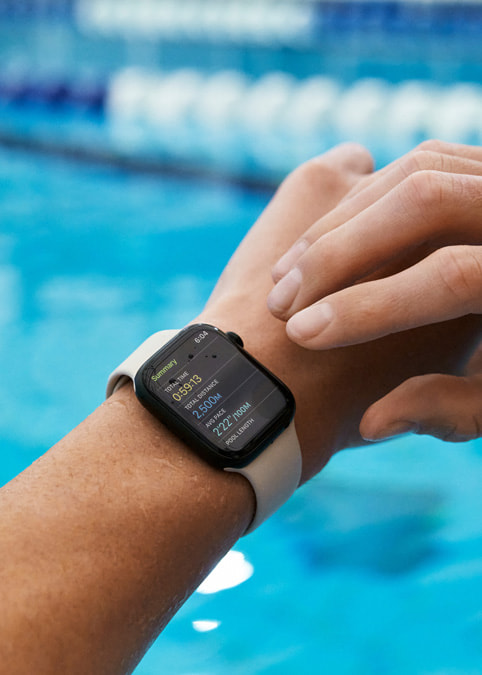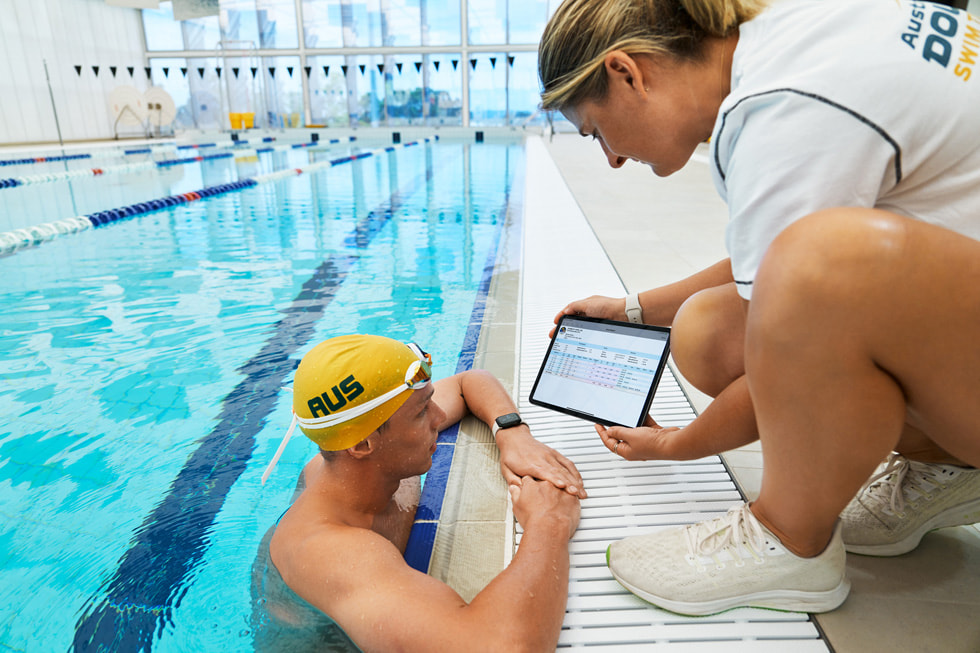FEATURE
17 August 2022
Australia’s national swim team uses Apple Watch and iPad to improve performance
From left to right: Australia’s national swim team, The Dolphins, use a combination of Apple Watch, iPad, and apps to maximise the team’s performance outcomes. Swimming Australia’s performance team records race and training footage using the Camera app on iPad.
From top to bottom: Australia’s national swim team, The Dolphins, use a combination of Apple Watch, iPad, and apps to maximise the team’s performance outcomes. Swimming Australia’s performance team records race and training footage using the Camera app on iPad.
Australia’s national swim team, The Dolphins, has been using Apple Watch, iPad, and a combination of apps to improve its performance outcomes, helping propel the team during its most successful period in history. Through harnessing the sensors and activity-tracking features within Apple Watch, Swimming Australia’s coaches can more accurately capture a complete picture of their athletes’ overall health and performance. And when paired with iPad and custom apps, this powerful ecosystem delivers real-time data and analysis, and a portable, powerful visual feedback tool for coaches to use when communicating with athletes in the pool. The native Workout app on Apple Watch tracks both pool and open water disciplines, and it surfaces important swimming metrics the athletes can view during training sessions.
“Data is the key ingredient when it comes to designing performance outcomes for our athletes,” says Jess Corones, Swimming Australia’s performance solutions manager. “We have seen increased engagement from athletes wearing Apple Watch, which gives us more data points to inform analysis and make coaching decisions. iPad has become an essential coaching tool because it allows us to access athlete health data and race footage instantly from anywhere.”
Australia’s Elite Swimmers Are Using Apple Watch to Track Key Metrics in the Pool and the Ocean
World record holder and gold medallist swimmer, Zac Stubblety-Cook, relies on Apple Watch for instantaneous feedback throughout the day to better manage his training load and recovery to ensure he arrives at competitions in peak performance.
“As an elite athlete, it’s important for me to access heart rate and activity data in real time so I can make quick adjustments and avoid overtraining,” says Stubblety-Cook. “Being able to accurately measure my heart rate in between sets has been a really valuable data point for me and my coach to understand how well I’m responding to training.”
Apple Watch uses the gyroscope and accelerometer to count laps, track average lap pace, and auto-detect stroke type to measure active kilojoule burn. Users set the pool length and Apple Watch automatically measures splits and auto sets. For open water swims, Apple Watch uses the built-in GPS and accelerometer to accurately determine the swimmer’s route and distance.
Coming later this year, watchOS 9 will introduce new swimming enhancements including the addition of kickboard detection as a stroke type for Pool Swim workouts. Using sensor fusion, Apple Watch will automatically detect when users are swimming with a kickboard and classify the stroke type in the workout summary, along with distance swam. Swimmers will also be able to track their efficiency with a SWOLF score — a stroke count combined with the time, in seconds, it takes to swim one length of the pool.
Before Apple Watch, marathon swimmer and bronze medallist, Kareena Lee, would have to guess how far she was swimming in the ocean.
“I started wearing Apple Watch to measure my distance, route, and splits when I was swimming in the ocean,” says Lee. “There are no clocks or defined distances in the ocean and before Apple Watch, I was just guessing. Following an injury, my physiotherapist and coach used my Apple Watch data to monitor my training load to ensure it was consistent so I could keep training.”
Para-swimming athlete, gold medallist and world record holder, Katja Dedekind, loves wearing Apple Watch because it gives her and her coach a complete picture of her overall activity. Dedekind is visually impaired, so she rides her bike to and from the pool because she can’t drive. It’s important that exercise out of the pool, such as bike rides, is also captured in the Workout app because it contributes to her training load.
“Being able to strap something on my wrist that is unobtrusive and tracks my sleep, activity, and heart rate variability has been incredibly handy,” says Dedekind. “It takes all the guesswork out of training preparation and is far more accurate than inputting data manually. In the lead-up to Birmingham, it played a huge role in my preparation as it allowed the performance team to remotely monitor my health and fitness to ensure I tapered off my training at the optimum time.”
From left to right: Para-swimming athlete, gold medallist and world record holder, Katja Dedekind, loves wearing Apple Watch because it provides a complete picture of her overall activity. The native Workout app on Apple Watch tracks both pool and open water disciplines, and it surfaces important swimming metrics the athletes can view during training sessions.
From top to bottom: Para-swimming athlete, gold medallist and world record holder, Katja Dedekind, loves wearing Apple Watch because it provides a complete picture of her overall activity. The native Workout app on Apple Watch tracks both pool and open water disciplines, and it surfaces important swimming metrics the athletes can view during training sessions.
iPad is Helping Swimming Australia’s Performance Team Make Critical Coaching Decisions Faster
Swimming Australia needed a versatile and portable method for providing quick feedback to athletes, so they developed the Locker app for iPad. Performance analysts can play back race footage, analyse data, and provide feedback to athletes in training and competition environments. Video of both race and training footage is stored in the Locker app, and the athlete’s technique is analysed to help coaches identify their stroke and kick counts, number of breaths, splits, and time off the blocks. All data is accessible to the coach at a glance so they can have meaningful conversations with their athletes, wherever they are.
“Most athletes are visual learners, and it’s incredibly powerful being able to show an athlete what we’re asking them to do while they’re engaged during a training session. Quick decision-making is crucial in the lead-up to big competitions to ensure we are maximising the team’s performance,” says Corones.
Technology will play a key role in the team’s preparation as they look forward to next year where they will compete at the World Championships and in Paris in 2024.
“Ultimately, this technology gives us the tools to design performance programs that help our athletes swim faster in the pool so they can win more medals,” she says.
Share article
Media
-
Text of this article
-
Images in this article
